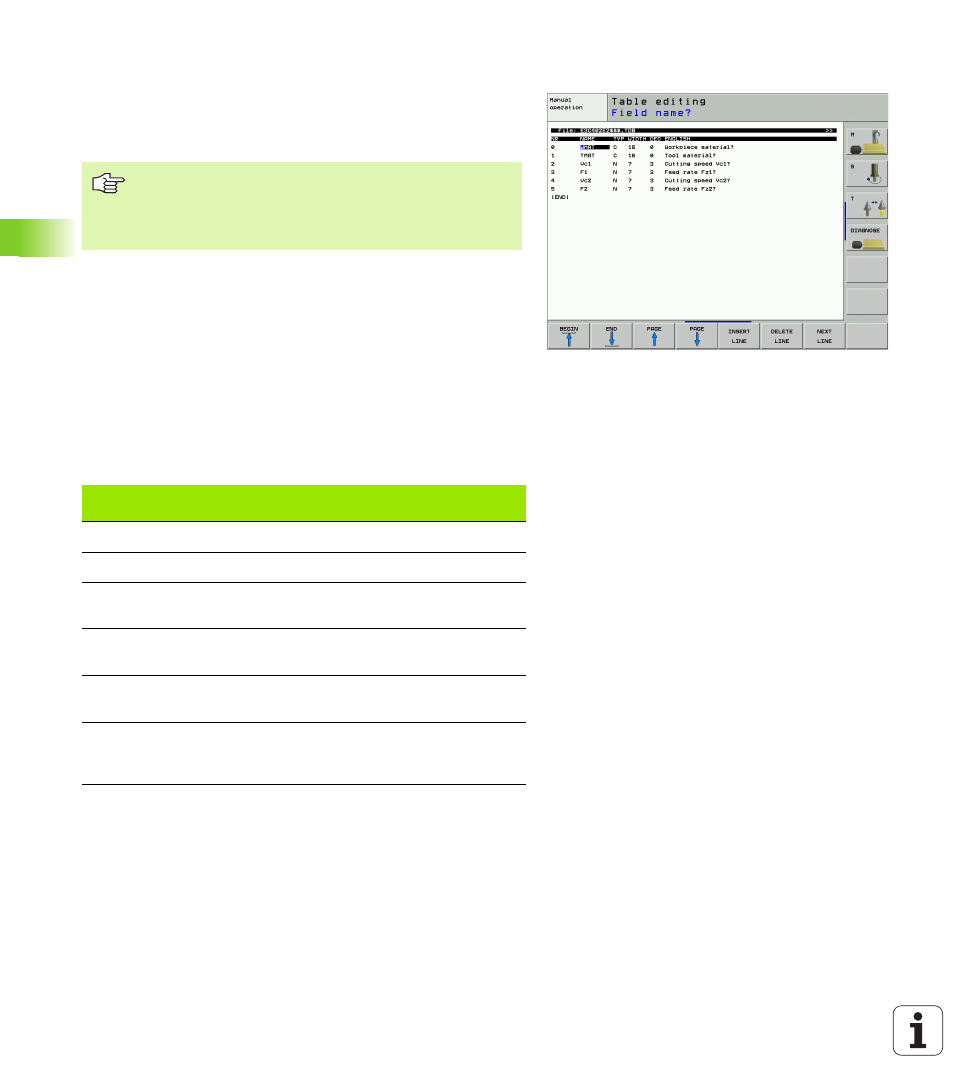Changing the table structure, 5 w o rk ing with cut ting d a ta t a bles – HEIDENHAIN iTNC 530 (340 49x-02) ISO programming User Manual
Page 190

190
5 Programming: Tools
5.5 W
o
rk
ing with Cut
ting D
a
ta T
a
bles
Changing the table structure
Cutting data tables constitute so-called “freely-definable tables” for
the TNC. You can change the format of freely definable tables by using
the structure editor. You can also switch between table view (default
setting) and form view.
Calling the structure editor
8
Press the EDIT FORMAT soft key (2nd soft-key level). The TNC
opens the editing window (see figure), in which the table structure
is shown rotated by 90°. In other words, a line in the editing window
defines a column in the associated table. The meanings of the
structure commands (header entries) are shown in the table at right.
Exiting the structure editor
8
Press the END key. The TNC changes data that was already in the
table into the new format. Elements that the TNC could not convert
into the new structure are indicated with a hash mark # (e.g., if you
have narrowed the column width).
The TNC can process up to 200 characters per row, and
up to 30 columns.
If you insert a column into an existing table, the TNC does
not automatically shift the values already entered.
Structure
command
Meaning
NR
Column number
NAME
Overview of columns
TYPE
N: Numerical input
C: Alphanumeric input
WIDTH
Width of column. For type N including algebraic
sign, comma, and decimal places.
DEC
Number of decimal places (max. 4, effective
only for type N)
ENGLISH
to
HUNGARIA
Language-dependent dialogs
(max. 32 characters)
